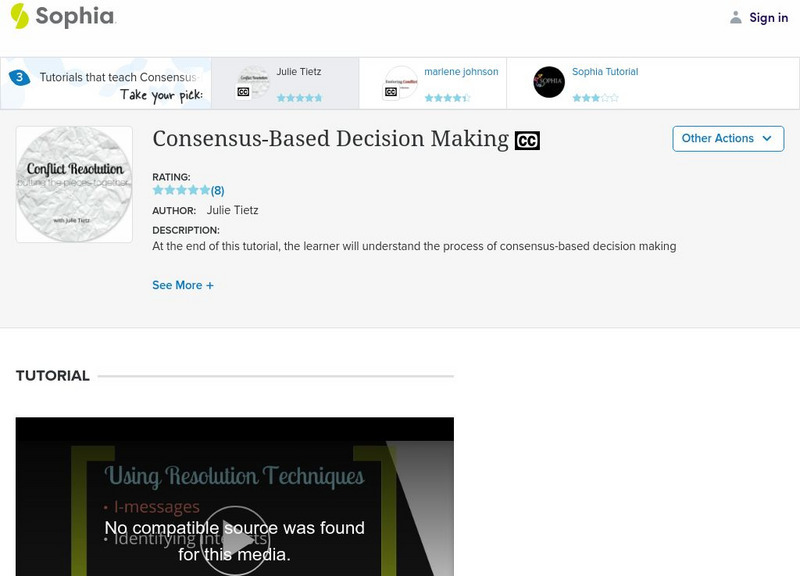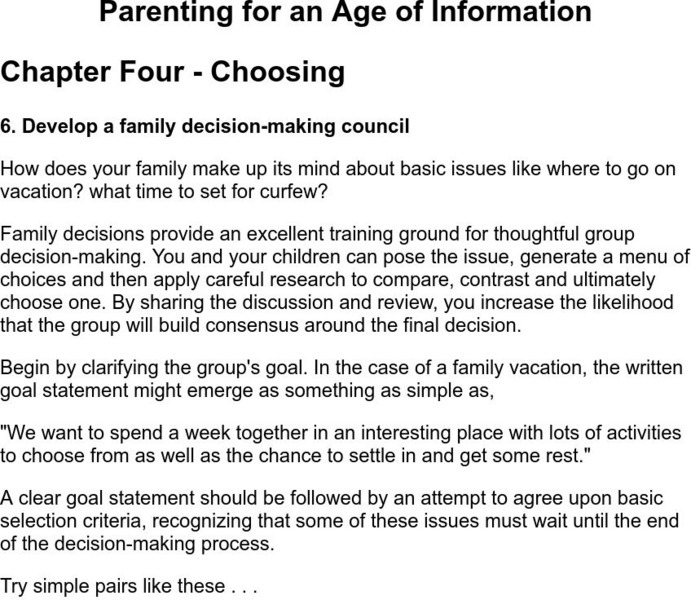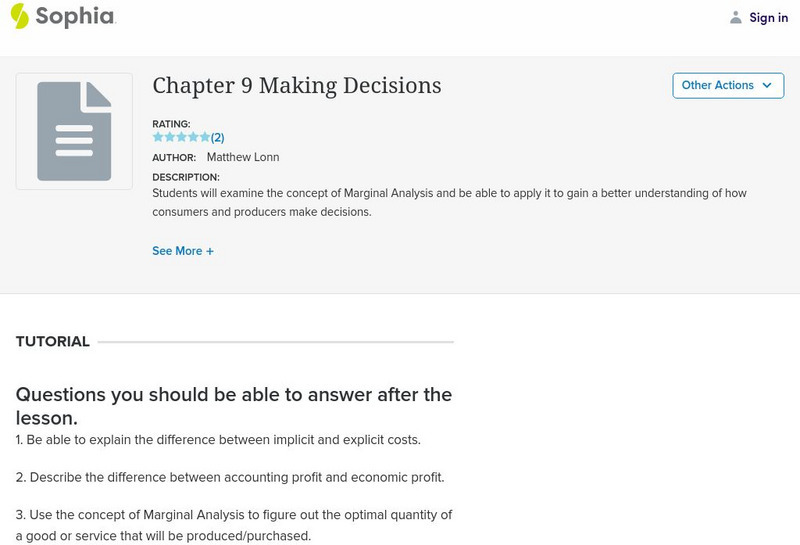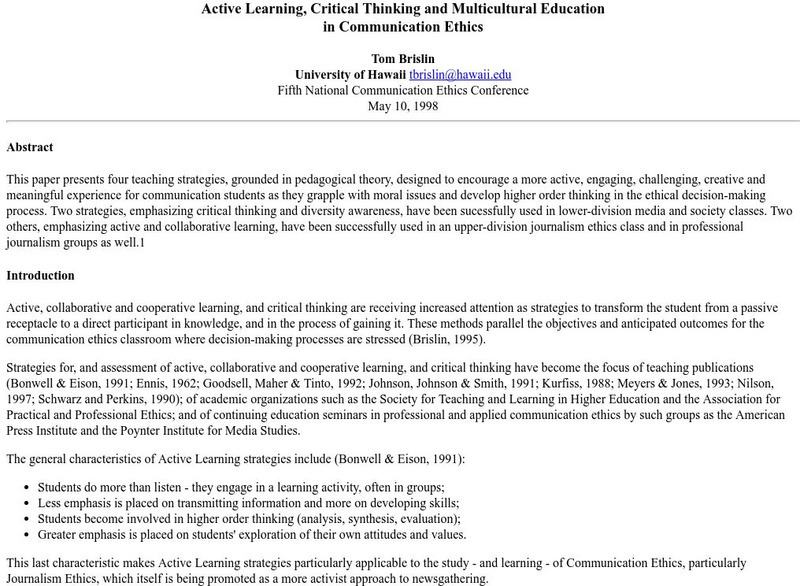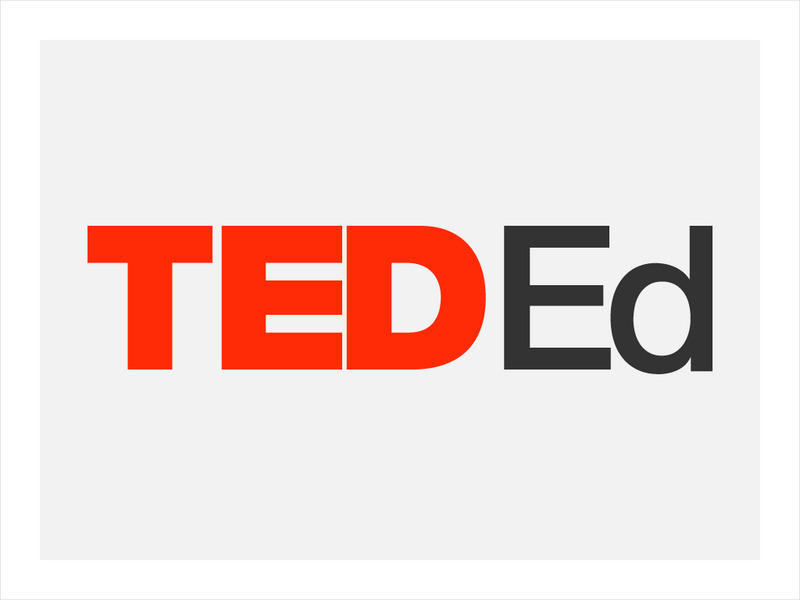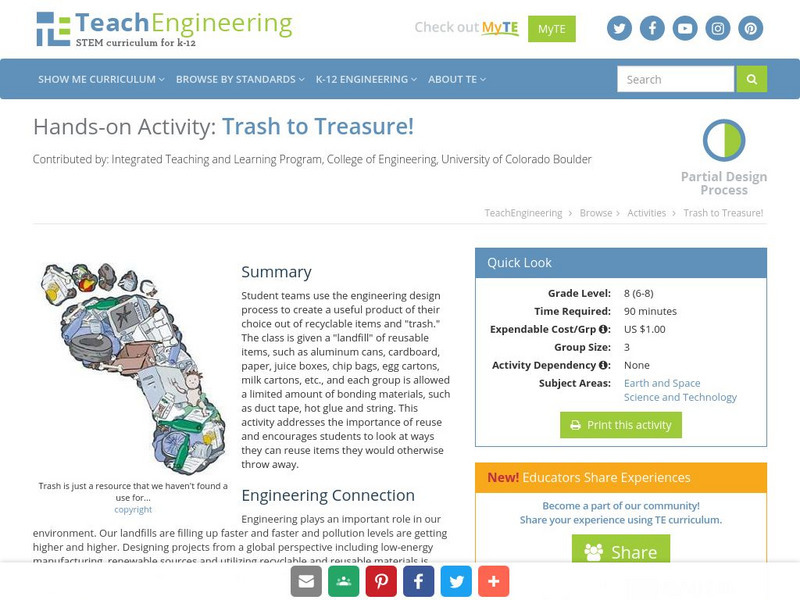Hi, what do you want to do?
Sophia Learning
Sophia: Of One Mind: Consensus Based Decision Making: Lesson 2
At the end of this tutorial, the learner will understand the process of consensus-based decision making. It is 2 of 3 in the series titled "Of One Mind: Consensus-Based Decision Making."
Sophia Learning
Sophia: Non Rational Factors in Decision Making: Lesson 2
At the end of this tutorial, the learner will understand that decision making is not an entirely rational process and will be able to name some of the factors that influence it. It is 2 of 3 in the series titled "Non-Rational Factors In...
Other
The Math Center: Advice for Factoring Polynomials
This is a general resource on how to factor any polynomial. It reads like a flow chart on the decision-making process. Contains information about factoring polynomials with two, three, or four terms.
Mind Tools
Pmi Weighing the Pros and Cons of a Decision
Defines and explains the PMI Decision Making System, which improves upon the weighing pros and cons method to make a decision.
FNO Press
Fno.org: Develop a Family Decision Making Council
Brief article introduces PMI as a method of decision making. While the thrust of the article deals with building skills for the information age, the PMI model is an interesting way to go about family decisions.
Other
E Rulemaking Program: Let Your Voice Be Heard
You can make a difference in the federal decision making process. Search by date, category, or government agency and read recent governmental regulations. Assess these regulations firsthand and provide feedback to the people who matter.
Wisc-Online
Wisc Online: Barriers to Critical Thinking: Errors in Judgment
Users of this learning module will explore the Errors in Judgment: Barriers to Critical Thinking and how it affects their decision-making processes.
Sophia Learning
Sophia: Making Decisions
Notes and a video clip provide students with an introduction to the idea of marginal analysis and of how consumers and producers make decisions.
Other
The Consumerist
The Consumerist, a subsidiary of Consumer Reports, accepts tips from consumers to cover stories people want to hear or should become aware of based on consumers interests.
PBS
Wnet: Thirteen: Freedom: A History of Us: Whose Land Is This? [Pdf]
A lesson plan, with printable activity sheets, from the producers of the 16-episode PBS series "Freedom: A History of US." Designed to help learners examine the anti-immigrant sentiment that led to the Chinese Exclusion Act of 1882 and...
Other
New Internationalist: Making Decisions
From a 1984 article published in the New Internationalists, "Slow Train to Patna," the author describes a train journey in Bihar, India, where passengers explore the world of community action.
Other
Dover Adult Learning Center: Pick Your Candidate [Pdf]
This document from the Dover Adult Learning Center is a nice resource for any beginners in the political decision-making process. Provides links to material to help decipher ads, candidate speeches, rhetorical tricks, campaign issues,...
Sophia Learning
Sophia: Stakeholder Processes: Lesson 2
At the end of this tutorial, the learner will understand the concept of the stakeholders' process. It is 2 of 3 in the series titled "Stakeholder Processes."
PBS
Pbs: The Dust Bowl
You are about to embark on an experience that will show you what life was like on the southern Great Plains during the Dust Bowl. On your journey, you will learn about the changing market and weather conditions and be asked to make...
TeachEngineering
Teach Engineering: The Energy Problem
This six-day lesson provides students with an introduction to the importance of energy in their lives and the need to consider how and why we consume the energy we do. The lesson includes activities to engage students in general energy...
Virtual Salt
Virtual Salt: Biases Affecting Information Processing
Author discusses eleven separate biases that can affect decision making. Also provides several factors at the bottom of the page which negatively influence decisions.
Mind Tools
Force Field Analysis
Defines and describes the force field analysis decision-making process. This process is particularly useful when a change is to be implemented.
University of Hawai'i
University of Hawaii: Communication Ethics
"Active Learning, Critical Thinking and Multicultural Education in Communication Ethics" discusses strategies to assist students in dealing with moral issues and to develop higher order thinking in the ethical decision-making process.
Sophia Learning
Sophia: Multiple Choice: Eliminating Extreme Choices: Tutorial
In this slideshow tutorial, students will review different ways to eliminate poor choices that may be seen on multiple choice tests. Marking strategies to use during the process of elimination are included, along with examples of how to...
TED Talks
Ted: Ted Ed: How to Make a Mummy
Learn about the many steps involved in the process of mummification use by the Egyptians in their burial process. What is preserved after thousands of years? And what can scientists learn about life in ancient Egypt from studying...
Other
Natural Rights and the Limited Government Model of the Constitution
There is much to commend Professor Garry's essay. He is eminently correct in saying that the Constitution contemplated a limited government. Whether it adhered to a "limited government model" is a different issue. What is more than...
TeachEngineering
Teach Engineering: Trash to Treasure!
Student teams use the engineering design process to create a useful product of their choice out of recyclable items and "trash." The class is given a "landfill" of reusable items, such as aluminum cans, cardboard, paper, juice boxes,...
TeachEngineering
Teach Engineering: Biodomes
Students explore the biosphere's environments and ecosystems, learning along the way about the plants, animals, resources and natural cycles of our planet. Over the course of lessons 2-6, students use their growing understanding of...
Soft Schools
Soft Schools: Cellular and Molecular Biology : Cell Processes Quiz
Take this interactive, multiple-choice quiz over the biochemical processes of life, then review your score and any missed questions at the end.





